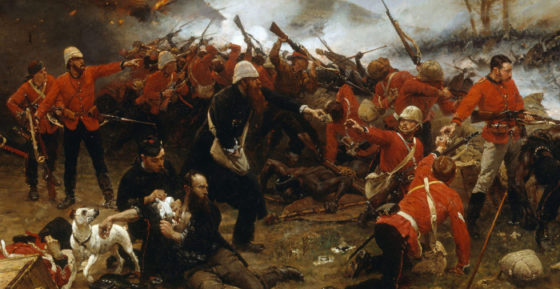
“More than a dozen nations maintain inland navies, most of which will likely never see service on (or even near) the world’s oceans.”
ALTHOUGH IT MAY not enjoy the seafaring notoriety of say Great Britain, France or Spain, the tiny navy of Paraguay has a surprisingly long and proud maritime tradition. Established in the 19th Century, the naval force of the small South American country boasts 12 bases, 34 surface vessels, a modest but competent air wing consisting of patrol planes and attack helicopters, a 2,000-member civilian reserve, and even a marine corps with 800 troops. Paraguay’s fleet also has an impressive wartime record — it made significant contributions to its nation’s victory against neighbouring Bolivia during the bloody and decisive three-year Chaco War (1932 to 1935). But perhaps the most remarkable thing about Paraguay’s navy is the fact that it’s completely landlocked – the country has no coastline whatsoever. Despite this, its warships and patrol craft operate on that nation’s major rivers and inland waterways. Astonishingly, Paraguay is not the only country without any ocean access that still manages to maintain a military fleet. More than a dozen nations maintain inland navies, most of which will likely never see service on (or even near) the world’s oceans. Let’s meet some of these brown-water fleets.
The Caspian Navies
The largest inland body of water in the world, the Caspian Sea, is bordered by a number of Central Asian republics that have no other access to water. And with a wealth of oil and other natural resources beneath its floor, it’s no surprise that the countries that share this 3.6 million sq. km land-bound salt-water sea all maintain a naval presence on it. The 5,000-sailor Azerbaijan Navy, which was formed after the break-up of the Soviet Union, is just one of the three otherwise landlocked fleets to patrol the Caspian. Headquartered in Baku, the small force includes one Russian-built Petya-class frigate, seven patrol boats, nine minesweepers and an assortment of landing craft and cutters. Azerbaijan even has its own version of the Navy SEALs, the 641st Special Warfare Naval Unit. [1] Kazakhstan also maintains its own Caspian surface fleet, albeit a much tinier one than its neighbour. The 3,000-person force maintains 14 light patrol vessels and a naval aviation squadron consisting of Soviet-era Su-27 fighter jets and a handful of helicopter gunships. The third landlocked nation in the region with a navy is Turkmenistan. The smallest of the three Caspian powers, its maritime force can field only a handful of patrol craft and maintains a manpower level of about 500. [2] Despite this, the Turkmenistan navy held its first-ever military exercise in late 2012.
Fresh Water Fleets
A number of countries without ocean coastlines maintain their naval forces on inland fresh water lakes. Uganda’s People’s Defence Forces include a 400-personnel navy on Lake Victoria. The force has fewer than 10 patrol boats, all of which are less than 100 tons. [3] Bolivia, despite having lost its access to the Pacific in 1879, has a 173-vessel navy that patrols the waters of Lake Titicaca. Although the force consists of mostly zodiacs and whalers, it does maintain one American made PT-boat. It also keeps a number of craft moored in Rosario, Argentina, which is situated on a waterway that empties into the South Atlantic. The Bolivian Navy also has a naval aviation wing consisting of two single engine Cessna lookout planes and a 600-troop marine corps.
Blue Danube
Two separate landlocked nations, Serbia and Hungary, both operate small professional navies on the River Danube. As recently as the 2006, Serbia had its own sea going navy on the Adriatic, but lost it when the former Yugoslavian republic surrendered its control over Montenegro following an independence referendum there. Today, Serbia’s so-called River Flotilla operates a handful of patrol boats and even some assault craft. Upstream, the Hungarian army controls what is known as the Home Defence Pyrotechnician and Warship Battalion, a fleet of minesweepers operated out of Budapest.
Brown Water Navies
A host of other landlocked countries maintain modest river patrol forces, mostly as arms of their respective countries’ armies or self-defence forces. These include: Laos, Switzerland, Rwanda, Burundi, the Central African Republic and Malawi, one of the most impoverished countries in the world.
(Originally published on MilitaryHistoryNow.com on Nov. 26, 2012)
______________________
If you’d like to receive alerts about the latest articles and posts, click on the link in the upper right margin marked “FOLLOW THIS BLOG”. And don’t forget to follow us on Twitter.










4 thoughts on “Navies Without Oceans — Meet the World’s Landlocked Fleets”